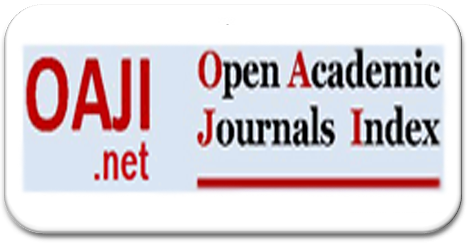Qira’at Al-Qur’an: Genealogi Kemunculan dan Perbedaan Bacaan
Abstract
The study of Qira'at (Quranic recitations) holds a crucial position in the scholarly discourse on the Quran, focusing on the theoretical aspects of accurately reciting its verses. The Quran is characterized by its extensive variety of recitations, historically rooted in the teachings of Prophet Muhammad. This diversity often leads to confusion and skepticism among the public regarding the authenticity of the Quranic readings. This article aims to explore the genealogy of the variations in Qira'at, including their origins, contributing factors, and the wisdom behind these variations. Our research indicates that the emergence of different Qira'ats is attributed to both internal and external factors: internally, the Prophet's request to Allah for additional variations in recitation, as evidenced by numerous narratives on the revelation of the seven Ahruf (modes of recitation), and externally, the perspectives of orientalists such as Arthur Jeffery, Theodore Noldeke, and Ignaz Goldziher, who argue that these variations arose due to the absence of vowel and consonant markings in the original text. The benefits of Qira'at diversity include reinforcing Islamic unity, facilitating easier and more accessible recitation across various dialects, and highlighting the miraculous nature of the Quran and Allah’s favor towards the followers of Prophet Muhammad SAW.
Abstrak: Ilmu Qira'at adalah bidang studi penting dalam disiplin ilmiah Al-Quran, fokusnya adalah pada teori dan praktik membaca ayat-ayat Al-Quran secara akurat. Al-Quran dikenal memiliki beragam variasi bacaan, yang berakar dari pengajaran Nabi Muhammad SAW. Variasi ini sering kali menimbulkan kebingungan dan skeptisisme terhadap autentisitas bacaan Al-Quran di kalangan masyarakat. Artikel ini bertujuan untuk membahas genealogi perbedaan qira'at, mencakup asal-usul, faktor penyebab, dan manfaat dari variasi qira'at tersebut. Penelitian menunjukkan bahwa perbedaan qira'at muncul dari dua faktor utama: faktor internal, seperti permintaan Nabi kepada Allah untuk menambah variasi dalam cara bacaan yang dibuktikan dengan banyaknya riwayat tentang sab’ah al-qira’at, dan faktor eksternal, termasuk pandangan orientalis seperti Arthur Jeffery, Theodore Noldeke, dan Ignaz Goldziher yang berargumen bahwa perbedaan tersebut timbul karena ketiadaan tanda vokal dan konsonan pada teks asli. Manfaat dari variasi qira'at ini termasuk memperkuat kesatuan umat Islam, memudahkan pembacaan dengan berbagai dialek, serta menegaskan keajaiban Al-Quran dan keistimewaan umat Nabi Muhammad SAW.
Keywords
Full Text:
PDFReferences
Aida, Aida, Aisya Nur Faradila, and Annisa Kartika Dewi. “VARIASI QIRA’AT DAN LATAR BELAKANG PERBEDAAN QIRA’AT.” MUSHAF JOURNAL: Jurnal Ilmu Al Quran Dan Hadis 2, no. 1 (2022): 101–11. https://doi.org/10.54443/mushaf.v2i1.23.
Al-Mazini, ’Abdul al-’Aziz bin sulaymann bin Ibrahhim. “Mabahith Fi ’ilmi Al-Qiraat.” Ishbiliya: dar kunuz ishbiliya, 2011.
Al-Qur’an Al-Karim, n.d.
Amroeni Drajat. Ulumul Qur’an. Depok: Kencana, 2017.
Arif, Syamsuddin. Orientalis & Diabolisme Pemikiran. Jakarta: Gema Insani Press, 2008.
Az-Zarqani, Muhammad Abdul Azhim. Manahil Al-Irfan Fi Ulum AlQur’an. 01 ed. Beirut: Matba’ah Isa al-Babi al-Halabi, n.d.
“Catholic Encyclopedia, Historical Criticism,” n.d.
Hamzah, Mukhtab. Studi Al-Quran Konfrehenshif. Yogyakarta: Gema Median, 2003.
Hikmawati, M. Perbedaan Qira’at Dan Pemaknaan: Analisis Semantik-Gramatikal Dalam Alquran. Tangerang: YPM Press, 2017.
Ibnu Hajar al-Asqalani. Fath Al-Bari Syarh Sahih Al-Bukhari. Riyadh: Maktabah Fahd al-Wataniyah, 2001.
Ibrahim, ’Abdul ’Aziz Sulayman. “Mabahith Fi ’ilmi Al-Qira’at,” n.d.
Ibrahim, ’Abdul ’Aziz Sulayman. “Mabahith Fi ’ilmi Al-Qira’at.” Riyadh: dar kunuz ishbiliya, 2011.
Iqipedia.com, Admin. “Qira’at Al-Quran, Pengertian, Macam-Macam , Faktor Perbedaan Dan Hikmahnya.” iqipedia.com, 2022.
Jeffery, Arthur. “The Textual History of the Qur’an” The Qur’an as Scriputre. New York: R.E. Moore Co, 1952.
Muhammad Ali Ash-Sha’abuni. Ikhtisar Ulumul Qur’an Praktis. Jakarta: Pustaka Amani, 2001.
Muhammad Ali Ash-Shabuny. Pengantar Studi Al-Qur’an. Bandung: PT.Al-Ma’arif, 1996.
Muhammad, Badr al-Dîn, and ibn ’Abd Allah Al-Zarkasyi. Al-Burhân Fî ’Ulûm Al-Qur`ân. 3rd ed. Cairo: Dâr at Turats, n.d.
Muhammad Irham. “Implikasi Perbedaan Qiraat.” Studi Al-Qur’an Dan Tafsir 8, no. 1 (2020): 1–9.
Nabil Muhammad Ibrahim. “Ilm Al-Qiraat Nashatuhu Atwaruhu Atharuhu Fi Ulum Al-Syariah.” Riyadh: maktabah al-taubah, 2000.
Qattan, Manna. “Mabahits Fii Ulumul Qur’an.” Cairo: maktabah wahbah, 1990.
Sayb, khoyru al-din. “Al-Qira’at Al-Quraniyyah Wa Atsaruha Fi Ikhtilafi Al-Ahkam Al-Fiqhiyyah.” Beirut: Dar Ibn Hazm, 2008.
Sitorus, Iwan Romadhan. “Asal Usul Ilmu Qira’At.” EL-AFKAR : Jurnal Pemikiran Keislaman Dan Tafsir Hadis 7, no. 1 (2018): 75. https://doi.org/10.29300/jpkth.v7i1.1589.
Umar, Ratna. “Qira’at Al-Qur’an (Makna Dan Latar Belakang Timbulnya Perbedaan Qira’at).” Jurnal Al-Asas 3 (2019): 37.
DOI: http://dx.doi.org/10.22373/substantia.v26i1.22807
Refbacks
- There are currently no refbacks.
Copyright (c) 2024 Maulidati Masruroh, Aswadi Syuhada

This work is licensed under a Creative Commons Attribution-NonCommercial 4.0 International License.
SUBSTANTIA: JURNAL ILMU-ILMU USHULUDDIN
DITERBIKAN OLEH:
FAKULTAS USHULUDDIN DAN FILSAFAT
UNIVERSITAS ISLAM NEGERI (UIN) AR-RANIRY BANDA ACEH, ACEH INDONESIA
ALAMAT REDAKSI:
Gedung Fakultas Ushuluddin Lantai II, Fakultas Ushuluddin, UIN Ar-Raniry, Jln. Lingkar Kampus, Kopelma Darussalam Banda Aceh, Aceh 23111.Telp. (0651)7551295. eMail: [email protected]

This work is licensed under a Creative Commons Attribution-NonCommercial 4.0 International License.


.png)




















